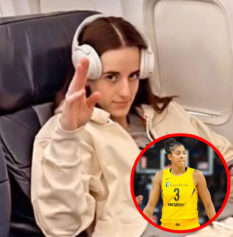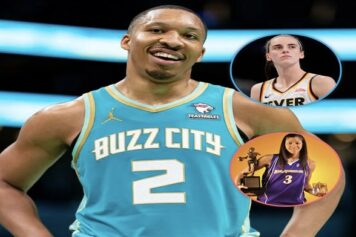In June, I posted an interview I did with women’s basketball legend Cheryl Miller. Miller, elder sister to NBA shooting scientist Reggie Miller, is considered by basketball historians to be the finest women’s player to ever grace the hardwood.
Unfortunately, many of today’s young ballers consider the legendary exploits of Miller, now 50, no more than mythical tales and typical oldschool ranting about the jewels of yesteryear. Before the social media age sparked hype machines larger than Lenny Cooke and more disappointing than Nicole Kaczmarski, Miller did her damage in the early '80s, before women’s basketball was even cool.
Before ESPN could blow you up overnight and before the NBA funded the WNBA and a worldwide, respected platform for women’s basketball emerged. In Miller’s time, seeing such talent in one arena was relegated to the Olympic Games every four years.
Once the WNBA jumped off, the stories about these female basketball titans became reality as their games were broadcast into the homes of millions and marketed as a bonafide sporting event. Miller's pioneering exploits still existed, but soon became distant memories and dusty scrolls in basketball's ever-evolving annals. Generations grew out of touch with her status. It’s sort of like how old school rappers and former Negro Leagues greats are treated by the unknowing, live-for-today masses.
Banging The Boards With Sex Appeal
One of the first megastars to emerge from the new league and benefit from this increased exposure was Los Angeles Sparks great Lisa Leslie. While Miller says she doesn’t regret never getting a chance to play in the Big Show, Leslie, who headlines a group of six basketball lifers who were inducted into the 2015 women’s basketball Hall of Fame on Saturday, made the most of her opportunity.
Like Miller, Leslie is an Olympic Gold medalist (four-time) who dropped 100 points in a California state high school game followed by a stellar career at USC (1990-94), and she was considered the “icon” and consistent “face” of women’s basketball during her 13-year pro career. Leslie led L.A. to back-to back NBA titles in 2001 and 2002, but her impact on the league and women around the world transcended the hardwood floors and stadium crowds.
Leslie was a cornerstone and royal building block of the WNBA. Her heir was “Jordanesque,” but she wasn’t a flashy guard. She loomed proudly as one of the original WNBA giants along with 7-2 Margo Dydek (RIP).
Leslie’s interior defense was ridiculous and she was the first to dunk in a WNBA game. For that reason, she’s also considered the WNBA’s first Kareem Abdul-Jabbar. Leslie was a three-time MVP (2001, 2004, and 2006) and upon retiring in 2009, Leslie held the WNBA career records for points (6,263) and rebounds (3,307).
The way Leslie embraced her unusual height and unwavering confidence at an early age, made her a role model for female athletes, girls who were exceptionally tall or anyone “different” who aspired to greatness but were slowed by American society’s judgmental, shallow and hypocritical nature.
Her business acumen, acting and fashion modeling ventures helped to change the perception that female athletes were awkward, uncoordinated, unattractive and “overly masculine.” Early in her career she signed a modeling contract with the world-reknown Wilhelmina modeling agency.
Leslie used her athletic prowess, celebrity and beauty as catalysts for fulfilling her dreams while inspiring others. She has been featured in Vogue and Newsweek, as well as many sports publications. She’s guest-starred on several television shows such as Sister Sister, The Game, and One on One and appeared in a variety of commercials.
Not that it matters now, but at the time, in helping to crush ignorant stereotypes often associated with female athletes (like they are all gay) Leslie was married in 2006 to Michael Lockwood, who has fathered her two children. Giving birth and continuing to play basketball at an All-star level also did a lot to dispel outdated notions concerning the rigors of child-rearing and it’s affect on a woman’s body and an athlete’s post-delivery performance.
In 2007, Leslie took a year's leave from professional basketball for the pregnancy of her daughter, Lauren Jolie Lockwood, who was born June 15, 2007. Some blowhards questioned her timing and if she would return the same player ( sad I know, but talk radio heads were actually having this conversation in 1997). Leslie came back with the force, winning WNBA Defensive Player of the Year in 2008.
Courageous and principled decisions like Leslie’s proved that women didn’t have to forgo their right to give birth or delay the choice because the'yre pro athletes.
THE BRAZILIAN BULLDOG
I had the honor of covering the WNBA in its infant stages (1998-99) and the Houston Comets “Big Three” of Cynthia Cooper, Tina Thompson and Sheryl Swoopes dominated the league’s early years, winning the first four WNBA c’hips (1997-2000). Two overlooked, but formidable members of coach Van Chancellor’s Houston Dynasty were pesky point guard Kim Parrot (RIP) and the "Brazilian Bulldog" Janeth Arcain, who will be joining Leslie as a 2015 HOF inductee.
Arcain was selected 13th overall by the Houston Comets in 1997. She played every Comets game in the first seven seasons of the WNBA before ditching the 2004 season to prepare for the Olympics. Arcain was an accomplished international star, leading Brazil to gold at the 1994 world championships and winning silver and bronze Olympic medals during her career.
On a team flooded with superstars, Arcain took a secondary role on offense and became the consistent “rock” of the Comets' four-peat dynasty. Arcain had her best season in 2001, averaging 18.5 points per game en route to Most Improved Player and First Team All-WNBA honors.
The WNBA was incorporated in 1996 and began playing in 1997. Leslie was drafted on January 22 by the LA Sparks as part of the Initial Allocation phase of the draft. She helped the Sparks make the playoffs five consecutive seasons, but the team didn’t grip the c’hip until 2001.
Despite Leslie’s obvious paint prowess, Houston’s four-headed monster had too much versatility and talent to be challenged, but once perennial league MVP Cooper retired in 2001 and waved goodbye to her adoring fans, Leslie rose to the top of the food chain and remained there before relinquishing the torch to players such as two-time WNBA MVP Candace Parker.
Parker is 6-foot-5 like Leslie, but her arrival represented the new age of dynamic player, as she also possesses the open floor skills and deft passing abilities of a ruthless guard. Similar to the fate of contemporary NBA centers, as Leslie grew older, the multi-faceted games of other tall WNBA players diminished the relevance of her traditional post skills. Leslie’s confidence, flair and sex appeal however, just intensified and lived on in the spirit of future legends like Parker, who also withstood criticism for taking a year off in her prime (2009) to give birth.
Saturday’s WNBA All-Star Game represented another changing of the guard in the league's 18-year history as Shoni “Showtime” Schimmel became just the third reserve to start an All-Star game and then in typical bright lights, big-stage fashion served a record 29 points and eight assists to lead the East to a 125-124 victory over the West in the game's first overtime thriller.
Schimmel’s basketball dopeness dating back to her Isaiah Thomas-esque performance with Louisville against Brittany Griner and powerhouse Baylor in the 2013 NCAA tournament, has elevated her to international fan favorite status and some, including The Shadow League’s own Alejandro Daniels is anointing her as the second coming.
With that taken into account, Schimmel breaking Candace Parker’s All-star game record of 23 points set last year is fitting. The fact that she grew up on a reservation in the tiny northeast Oregon town of Mission, has a vast Native American following and is now the face of inspiration for a legion of young people is why her jersey is the WNBA’s highest-selling. Like Leslie, Schimmel has given a voice and strength to a socially displaced group using the barrier-breaking glory, guts and glamour of women’s basketball.
It’s also fitting that Schimmel got to share her victory with another WNBA legend Tamika Catchings, an All-Star for a record-tying ninth time, who made a layup with 6.9 seconds to go to give the East the lead and then knocked the ball away from Skylar Diggins on the defensive end to seal the victory. Catchings has overcome a serious hearing impairment to thrive as a spokesperson and role model for other disabled people.
The poetic justice doesn’t end.
Diggins, another face of the WNBA’s bright future, is the league’s No. 2 scorer and jersey seller. She finished with 27 points and seven assists, leading the West’s comeback charge. She has also followed in Leslie’s trailblazing footsteps as a model and “brand” and is signed to Jay Z’s Roc Nation Sports fam.
Rising WNBA All-Stars such as Maya Moore, Tina Charles and Angel McCoughtry and “Dr. Dunkenstien” Griner – who has turned Lisa Leslie’s monumental dunk into an every game occurrence – are all business-minded bandits balling off Leslie’s blue print.
Because of the pioneering efforts of Leslie and the other 2015 women’s basketball Hall of Fame inductees (Arcain, University of Georgia standout Janet Harris, former Duke and Texas coach Gail Goestenkors, longtime Oregon high school coach Brad Smith and Oklahoma State coach Kurt Budke, who was killed in a plane crash in 2011), women’s basketball continues to get more shine and fill more voids in the lives of young girls, presenting them with opportunities for growth and preparing them for a lifetime of confidence, strength and positive achievement.



